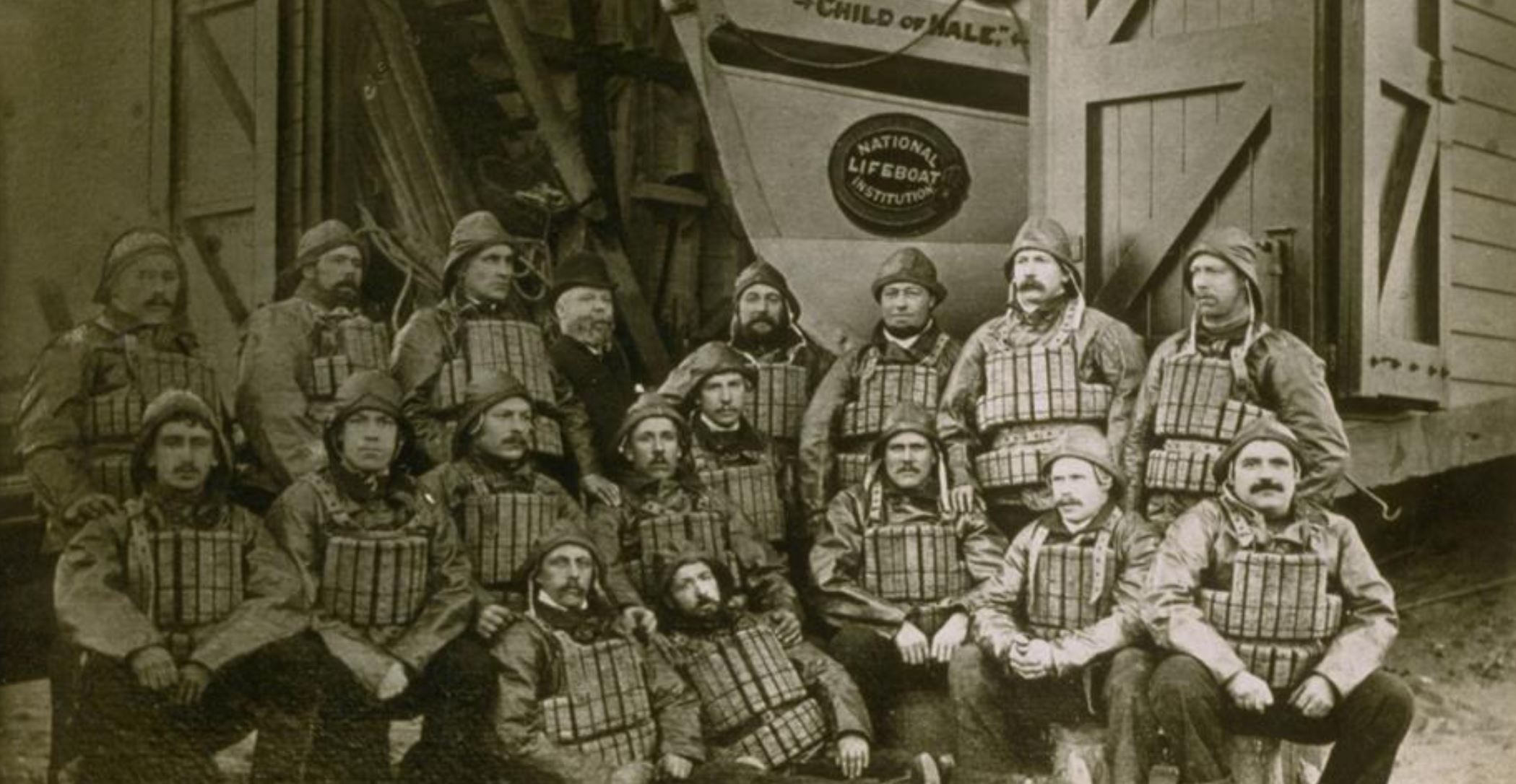For most sailors, it is second nature to pull on a life jacket before slipping the lines. Modern designs are lightweight and comfortable to wear, and can last many years if serviced regularly and professionally. Early life jackets, though, were a different matter altogether. They were bulky and inconvenient, yet did the same job that our modern kit is designed for – saving lives at sea.

It might be hard to imagine these days, but for three decades from the foundation of the RNLI in 1824, crews headed into ferocious seas and killer storms with no kind of life jacket. It was only 30 years after the organisation was founded that Captain John Ross Ward came up with the idea of the first personal floatation devices.
Several materials were tested for the first life jackets. These included canvas jackets inflated with air, horse hair, wood such as balsa, and rushes. All had serious drawbacks, so Captain Ward eventually settled on cork as the material for his design.
When the first life jackets were issued in 1854, there were no adjustable straps or other elements designed for comfort. There were only two sizes – large and small – which were designed to fit any lifeboat crew member or casualty in the water.
Of course, even today’s life jackets are no guarantee of survival. But they give the wearer a fighting chance, and that hasn’t changed since the beginning. When the Whitby lifeboat capsized during a rescue attempt as the Merchant ran ashore in 1861, all but one of the crew died. The only survivor was Henry Freeman. He was on his first shout – and was the only man on board wearing a cork life jacket designed by Captain Ward.
Technology and designs have evolved in the years since those first life jackets. Now, we can get a jacket that best fits our individual body shape (and wallet), pull a few straps to enhance comfort, and have it serviced regularly to ensure that it’s always going to do the job when needed. There are even different types of life jacket for different conditions, and some modern designs come equipped with a light, whistle, spray hood and space for a personal locator beacon.
Nevertheless, when we think of the first life jackets of the 1850s or the kit we pull on in the 2020s, they all have two things in common: they are designed to save lives, and they are absolutely useless if left in the locker.
Read more on the first life jackets and the development of life-saving kit on the RNLI website.
